
Connectivity and the IoT
From a connectivity standpoint, the IoT is simply the Internet reaching beyond our computers to include more of the devices and things around us. By definition, much of that connectivity has to be wireless. To provide some initial order to this growing web, we’ve organized the devices and things into networks that are loosely defined by the distances between them: called Wide Area, Local Area, and Personal Area Networks. It helps to think of Personal Area Networks (PAN) in terms of a Hub (i.e., our smartphone) and the peripherals (i.e., our hearables and other devices that enter the network), with each PAN eventually becoming a distributive computing node within the IoT. Unfortunately, there currently are no wireless platforms that enable us to create useful WPANs — just Bluetooth, which is passable when there are a couple of devices to connect, but terrible for connecting lots of them. So we can’t participate in the IoT in any meaningful ways, yet.
There are three ways to communicate wirelessly: with sound, light, or electromagnetic waves… until we can use entangled electrons. When we think of electromagnetic waves, we typically think of radio frequencies (RF), and in the case of WPANs, that’s Bluetooth. RF signals are all the same. The signal is loaded with energy and shot out the antenna to propagate as far as it can until the signal runs out of energy. That’s why RF is called a Far Field transmission. Far Field transmissions are great when you want to communicate over long distances, but create problems when they’re used to communicate over short distances. Problems include:
• Reliability — When too many RF devices use the same frequency too close to each other, they interfere. Most people don’t know that Bluetooth, Wi-Fi, ZigBee, baby monitors, and even microwave ovens all use the same frequency, and that they are already shutting each other down all the time. This is before we’ve even begun to try and connect those “trillions” of things! In hindsight, it’s obvious Bluetooth was destined to be a victim of its own success.
• Security — We can’t stop RF signals from propagating into free space… together with the handshake and encryption protocols. The National Security Administration (NSA) has issued repeated warnings about Bluetooth vulnerabilities that severely restrict its use when secure communications are needed. Attempts to hack into our power grid have resulted in restrictions on the use of Bluetooth by utility workers, and government facilities have begun to ban the use of Bluetooth to transmit even “sensitive” information.
• Power efficiency — When you pack a signal with enough energy to travel past the device you need to connect with, you’re wasting power. That’s why your Bluetooth ear piece only lasts a few hours, and that’s one of the reasons for Bluetooth “Low Energy”—they just turned down the power. But lower power also means lower data rates, lower security, and lower reliability.
Finally, Bluetooth audio is notorious for its skips and stutters. Bluetooth-enabled insulin pumps have already been hacked, and when there are too many Bluetooth devices on the Formula One racetrack — “link losses” of 3 to 5 seconds occur in mission critical systems at more than 200 mph! It’s absurd to think of using Bluetooth for the Connected Car if there’s an alternative. The fact is: Every technology has its time, and the age of Bluetooth is coming to an end.
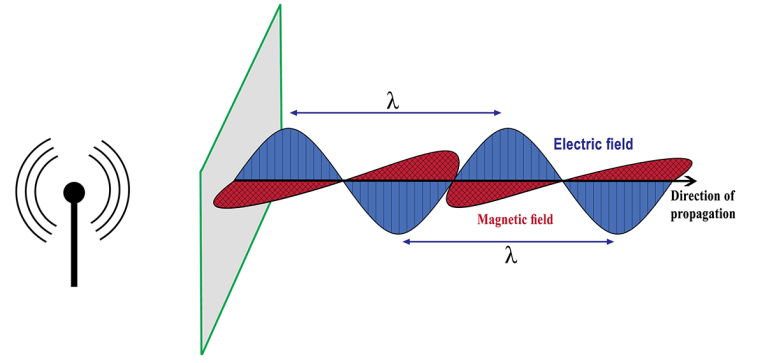
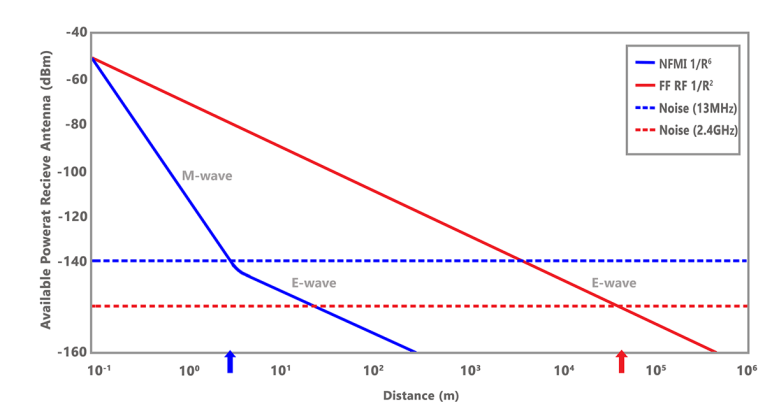

Near Field Magnetic Induction (NFMI)
Electromagnetic waves are composed of electric (RF) and magnetic (NFMI) fields, each carrying the exact same information (see Figure 1). However, the magnetic field decays a thousand times faster than the electric field, so it’s typically ignored. Modifying the antenna allows it to emit electromagnetic waves that are predominantly magnetic—non-propagating M-waves, alongside E-waves that are so weak they’re emitted below the noise floor (see Figure 2).
The result is a low-power wireless (magnetic) “bubble” around the user. Once inside the NFMI bubble multiple devices can connect and from the outside they simply cannot be seen. NFMI is also invisible to Bluetooth and Wi-Fi and does not cause electromagnetic interference (EMI) in nearby electronics (see Figure 3).
An NFMI signal decays so quickly it allows for a clearly defined, tractable boundary. The same frequency can, therefore, be reused a short distance away, practically eliminating spectrum contention. With a variable link distance of around 1.5m, the data rate for NFMI is 5 to 600 Kbps per frequency channel at around 13 MHz. Time division multiple access (TDMA) can provide for upward of 10 to 15 slots per channel. Older forms of NFMI have been used in hearing aids for more than a decade, proving it’s safe and capable of the highest levels of fidelity and reliability.
More advanced forms of NFMI are used for mission critical communications by the FBI and the US Secret Service, proving it’s highly secure. All forms of NFMI are many times more power efficient than Bluetooth, and NFMI even allows for wireless communications underwater and with deeply implanted medical devices (see Photo 1).
Finally, spatial location and orientation detection within the NFMI “bubble” will one day allow for Context Aware networks whose capabilities and permissions are defined by the nature and location of devices within the network at any given point in time. As Bluetooth-enabled devices have increasingly become access points for hackers and malware, NFMI offers a new set of Cybersecurity tools for the battle.
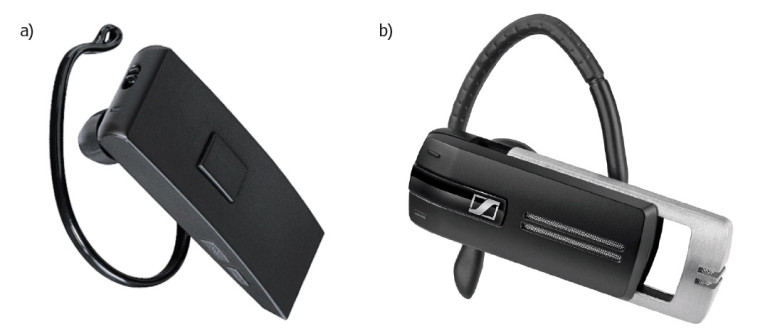
Wireless Ecosystems
I’m a surgeon and a relative newcomer to the world of wireless Personal Area Networking. This has enabled me to look at that ecosystem with fresh eyes. It struck me that Bluetooth is simply a (brilliant) derivative of Wi-Fi adapted to provide a platform for the “early years” of wireless Personal Area Networking. But did you know that Jabra had originally chosen NFMI over Bluetooth for its first wireless headset in 2002, for the same reasons that NFMI is a superior solution today? And, doesn’t Bluetooth 5.0 look like a wireless Local Area Networking platform, designed to fill the gaps in Wi-Fi coverage? Bluetooth 5.0 appears to be an orderly “retreat” by Bluetooth to get out of the WPAN market and into the M2M space.
Consumers are clearly unhappy with Bluetooth, but they‘re currently stuck with it. Apple’s W1 chip is an attempt to improve the customer experience by mitigating some of the protocol compatibility issues, but it may also be an attempt to drive Bluetooth and Wi-Fi back together to organize the available Information Systems Management (ISM) platforms into a useful ecosystem. Unfortunately, that approach reflects a failure to think outside of the RF box — a paradigm that’s defined by ISM band solutions (only) and reinforced by consortiums and commercial interests.
Remember, Bluetooth is a Far-field solution for a Near-field problem. Why not add a Near-field solution to the paradigm? Better yet, while NFMI may solve many of the current problems, the question should not be which platform to use, but rather, how do the various platforms work together to create a wireless ecosystem for the future (see Figure 4)?
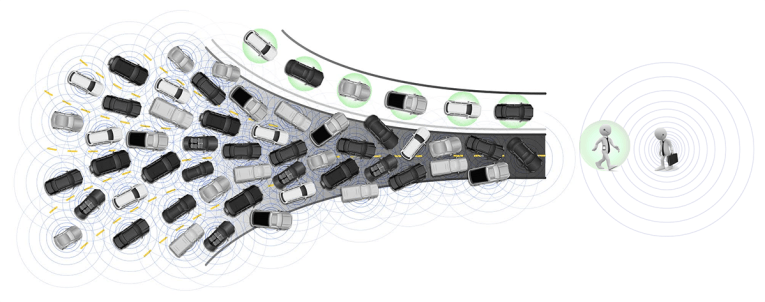
Cognitive Radio
The Cognitive Radio is a radio that can be programmed and configured dynamically to use the best wireless channels in its vicinity. Thus far, Cognitive Radio also appears to be limited to the RF paradigm. For example, choosing between 900 MHz or 5G depending on required data rates and available spectrum. But what happens if we add the near-field solutions? One could argue that Samsung’s ability to reconfigure its inductive antenna to communicate in either the NFC or MST mode is an early form of Cognitive Radio. Similarly, NFMI antennas could be reconfigured to read NFC and MST, but with the addition of a WPAN that is superior to Bluetooth by almost every measure. And why stop there? NFMI might be used to provide security protocols only to the devices inside the NFMI “bubble,” while Bluetooth or Wi-Fi were then used to transfer data.
Oddly enough, our smartphones already contain all of the necessary components for such a Cognitive Radio solution. NFC is really just a dumbed down version of NFMI. By upgrading the NFC chip and adding two tiny antennas, our phones could provide all of those inductive communications capabilities together with a variety of other wireless platforms.
This is the wireless hub of the future. It would enable us to connect to the IoT in meaningful ways, it offers to turn each WPAN into a powerful distributive computing node, and it is clearly within our reach. Without this hub, Connected Health, the Connected Car, the Wireless Soldier System, and even the Mobile Wallet are not achievable. Or, just imagine your high fidelity headphones without all the skips and stutters.
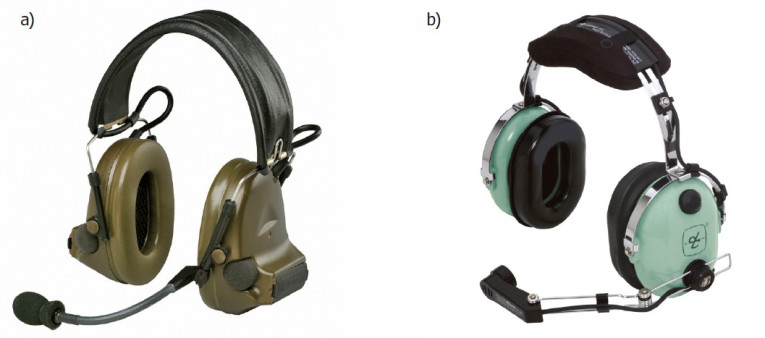
High-Fidelity Wireless Audio
The fidelity of a wireless audio signal depends on how accurately the information is transmitted to the receiver. NFMI, like Bluetooth, can provide the necessary data rates for high fidelity audio, but the similarities end there. Body blockage, signal fade and interference all contribute to packet loss and reduce the fidelity of a Bluetooth signal. NFMI is not subject to those causes of skips and stutters (see Photo 2).
Magnetic signals are not attenuated by the human body, do not reflect, and decay a thousand times faster than Bluetooth. Accordingly, NFMI does not require the complicated protocol stack and compression schemes that can contribute to losses in fidelity (and power efficiency). For those of us who grew up with the rich sounds of vinyl and are turned off by the increasingly “lossy” lifeless sounds of compressed digital music files, you can’t help believing that someone wants the next generation of audiophiles to accept this as the new normal because it’s compatible with Bluetooth… a crazy kind of commercial symbiosis. In other words, who cares if the link is lossy when our expectations are so low in the first place? Brand aside, the fidelity offered by NFMI is incomparable.
Standards
In 1980, the Institute of Electrical and Electronics Engineers (IEEE) created the 802 designation to standardize the physical and data link layers for LAN. As improved connectivity allowed for a growing ecosystem of connected devices, this was one of the earliest seeds of the IoT. Twenty years later, another early IoT seed was planted: the Personal Area Networking standard. In 2002, the IEEE established the 802.15 standard that allowed Bluetooth to address the need to create tighter wireless networks. Perhaps realizing that Bluetooth would become a victim of its own success, the Near Field Communications (NFC) consortium was created in 2004 to address the need for better short-range connectivity. Using a hybrid of far-field and near-field technologies, the subsequent development of NFC standards set the stage for NFMI to become a new WPAN standard at the same frequency. For all practical purposes, the standards for an NFMI WPAN are already in place! In fact, NXP began petitioning the NFC consortium to create a WPAN designation for near field communications back around 2009, similar to what the IEEE did for Bluetooth in 2002.

radios.
The Commercial Realities
As a doctor, I tend to be a bit of a dreamer, and had hoped the extraordinary possibilities offered by NFMI might be enough to catalyze the adoption process. I imagine a pacemaker that could securely dial 911 through your phone and would allow me to remotely guide your resuscitation if your heart stopped beating. I can see this is only possible with NFMI. But as a CEO, I’ve learned there’s a long road between the development of a capability and the customer who’s willing to pay for it.
So where is NFMI on the adoption curve? NFMI has already begun to appear in Consumer Electronics with products such as the Skybuds, which use it to safely provide a wireless link through the human head. The adoption of an even more versatile form of NFMI has begun in the military, where NFMI is being used to eliminate the cable between a soldier’s body worn technologies and their radios (see Photo 3).
Finally, we have to ask ourselves why we need NFMI if Bluetooth is ubiquitous and doing so well… Because it’s not. On February 2, 2016, Plantronics lost approximately 27% of its market cap due to a sales miss the CEO attributed to “the continuing decline in Bluetooth mono headset sales.” On August 26, 2016, St. Jude Medical lost approximately 5.8% of its market cap because of a report that pointed out its pacemaker was vulnerable to wireless hacks.
And on October 4, 2016, Johnson & Johnson lost approximately 1.5% of its market cap the day it was revealed its Bluetooth insulin pump had been hacked. It becomes clear that extraordinary and tangible value has been attributed to this growing connectivity problem, and that the market has spoken: The age of Bluetooth by itself is coming to an end, and the time for NFMI has begun. ax
This article was originally published in audioXpress, January 2017.
Resources
“Alpha Audiotronics Skybuds Truly Wireless Earbuds with NFMI Are Now Available,” audioxpress.com, www.audioxpress.com/article/skybuds-truly-wireless-earbuds-with-nfmi-are-now-available.
B. Lovejoy, “The W1 Chip Is a Big Deal, But I Fear It Will Also Be a Missed Opportunity,“ 9TO5Mac, 9to5mac.com/2016/09/12/apple-w1-chip-how-it-works.
N. Hunn, “Airpods—A Speculative Teardown,” LinkedIn,
www.linkedin.com/pulse/airpods-speculative-teardown-nick-hunn.
“IEEE 802.15: Wireless Personal Area Networks (PANs),” Institute of Electrical and Electronics Engineers (IEEE) Standards Association, standards.ieee.org/about/get/802/802.15.html.
“New Premium Wireless, Bluetooth Earphones from Beats,” www.audioxpress.com/
article/new-premium-wireless-bluetooth-earphones-from-beats.
E. Weise, “Johnson & Johnson Warns of Insulin Pump Hack Risk,” USA Today, www.usatoday.com/story/tech/news/2016/10/04/
johnson-johnson-warns-insulin-pump-hack-risk-animas/91542522.
“What is MST?,” Samsung Electronics Co., Ltd.,
www.samsung.com/global/galaxy/what-is/mst.
Sources
Bluetooth
Bluetooth SIG, Inc. |www.bluetooth.com
The Dash
Bragi | www.bragi.com
Near Field Magnetic Induction
FreeLinc | www.freelinc.com
About the Author
Dr. Michael Abrams is a graduate of Haverford College and a combined program in Medicine at Dartmouth and Brown Medical Schools. He served four years as an Army Medical Officer, and was a Pediatric Ophthalmologist for 16 years, regularly publishing his research in peer review journals. He is a Volunteer Faculty member for ORBIS International, on the Board of the Children’s Eye Foundation, and has a specific interest in Connected Health and self-sustaining educational models for emerging medical systems. In 2012, Dr. Abrams was appointed Chief Medical Officer of FreeLinc. In 2013, he reorganized the company and became its CEO.






